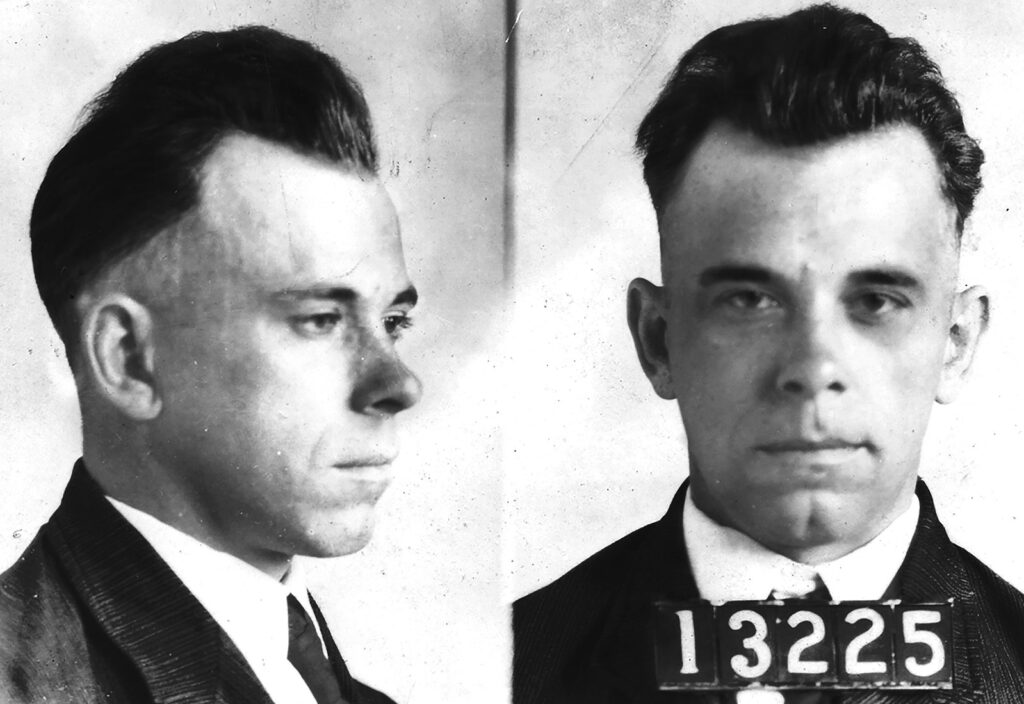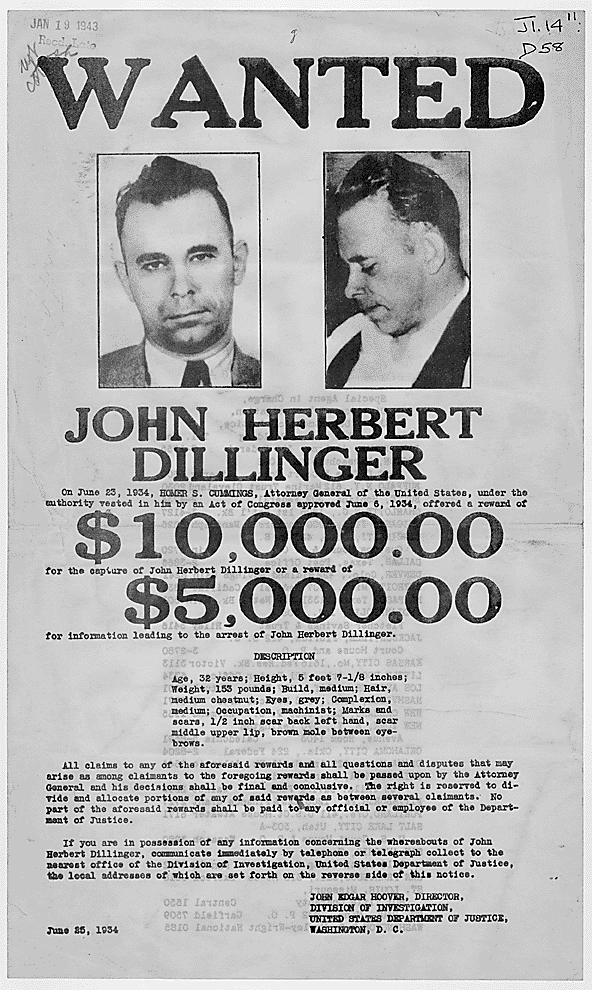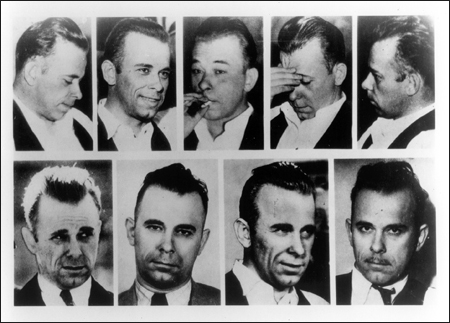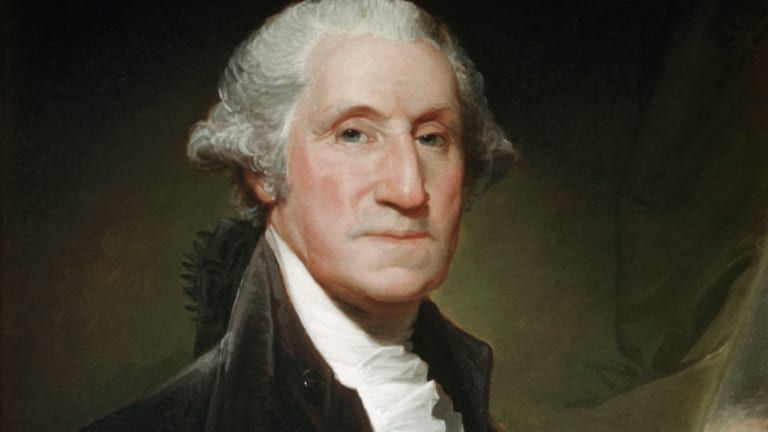John Dillinger was born in Indianapolis, Indiana in 1903, the younger of two children. His father was a strict man and kept a short leash on his children, beating them as punishment for any bad behavior they had.
This was unfortunate for Dillinger, as his mother died when he was only four. His sister took on the responsibility of showing him compassion while his father treated them harshly.
As Dillinger grew he began to exhibit deviant behaviors, getting in trouble for fights and petty theft, which was unacceptable to his father. Believing that the city was responsible for corrupting his son, Dillinger’s father moved the family to the smaller town of Mooresville, Indiana.
The move did nothing to deter Dillinger’s criminality, however. In 1922, he was arrested for auto theft. His arrest ruined the last of his relationship with his father and forced Dillinger to reevaluate his life.

A New Leaf
As a result, Dillinger turned to the military and enlisted in the US Navy. This turn towards a more upstanding lifestyle did not last long, however, as he deserted only a few months later while his ship, the USS Utah, was docked in Boston.
He then returned to Mooresville, where he got married and continued his attempt at leading a straight-and-narrow life. This attempt did not last long. Dillinger and his friend Ed Singleton robbed a gas station shortly after his return.
A local minister recognized the pair as they left the gas station. They were apprehended by police shortly after. While Dillinger originally was going to plead not guilty, Dillinger’s father spoke with the prosecutor and convinced Dillinger to plead guilty.
Both Dillingers were expecting a lenient sentence due to the elder’s discussion with the prosecutor. However, the judge sentenced Dillinger to 10-20 years in prison for charges of assault, battery with intent to rob, and conspiracy to commit a felony.
Both men were shocked, and Dillinger’s father attempted to lessen the sentence to no avail.
A Long Criminal History
The long prison sentence changed Dillinger and made him a harsher man. While in prison he befriended multiple bank robbers and the group developed plans for heists they would conduct once they were all out.
Dillinger’s father, likely wracked with guilt for convincing his son to plead guilty, organized a petition to let Dillinger out early which garnered nearly 200 signatures. After serving 8.5 years of his sentence, Dillinger was let out on parole.
Now a hardened criminal who was released at the height of the Great Depression, Dillinger immediately returned to crime as a way to make money fast.
Only a month after his release, Dillinger robbed his first bank outside of Dayton, Ohio. Then in August robbed a bank in Bluffton, Ohio, near Lima, where police detained him shortly after.
Police found what seemed like a plan for a prison escape, which Dillinger refused to give them details about. The plan was for his friends in Indiana State Prison, whom he had snuck guns to so they could escape the prison.
His six friends, who would be known as the “First Dillinger Gang,” escaped prison four days after Dillinger’s capture and immediately made their way to Lima. Posing as Indiana State Troopers who were there to extradite Dillinger, they attempted to rescue their comrade.
When the sheriff asked for credentials, the gang shot him dead and escaped with Dillinger, beginning an infamous career.

National Criminals
The group spent the next year robbing over 12 banks across the country. Their violence, tight gang, and spread-out targets caused the newly founded Indiana State Police to seek the assistance of the Bureau of Investigation, the precursor to the FBI.
Captain Matt Leach of the Indiana State Police received postcards and taunting letters from Dillinger, who remained one step ahead. J. Edgar Hoover, head of the BOI, used the chance to expand the techniques and tools of the BOI.
The gang continued to avoid capture, however, as they jaunted through Florida and made their way to Tucson, Arizona. The gang was arrested here, and Dillinger was transported back to Indiana where he quickly escaped the jail he was held in using a wooden gun he had carved in his cell.

Dillinger’s Death
After nearly a year on the run again, committing more heists with other gangs across the country and getting plastic surgery to avoid detection, Dillinger was finally caught in Chicago in 1934.
A Romanian immigrant who worked as a sex worker named Ana Cumpănaș struck a deal with the FBI to prevent her deportation. Dillinger regularly met with one of her coworkers and went to the movies.
Cumpănaș promised to help them catch Dillinger in return for not deporting her, a deal which the FBI later reneged. She wore an orange dress so that the federal agents could identify Dillinger beside her despite his plastic surgery, which gained her the nickname “the lady in red.”
As Dillinger exited the theater he could tell something was wrong. He reached into his pocket to grab a gun and fled to a nearby alley, where federal agents shot and killed him.
Dillinger existed alongside other criminal legends such as Baby Face Nelson and Bonnie and Clyde, the latter of whom died just two months before. He represented a new face of crime in the United States, one that was more organized and efficient.
This inspired the federal government to respond in kind and step up its enforcement efforts. J. Edgar Hoover saw Dillinger, his gang, and his peers, and believed in a new form of law enforcement that could more easily catch high-profile criminals.
This led to creating an early most wanted list. Dillinger’s death demonstrated the success of this new form of federal law enforcement.
References
FBI. “John Dillinger.” FBI.gov. https://www.fbi.gov/history/famous-cases/john-dillinger.
Indiana State Police. “The Pursuit of Public Enemy #1.” Indiana State Police, 2024. https://www.in.gov/isp/about-isp/history/the-pursuit-of-public-enemy-1/.

